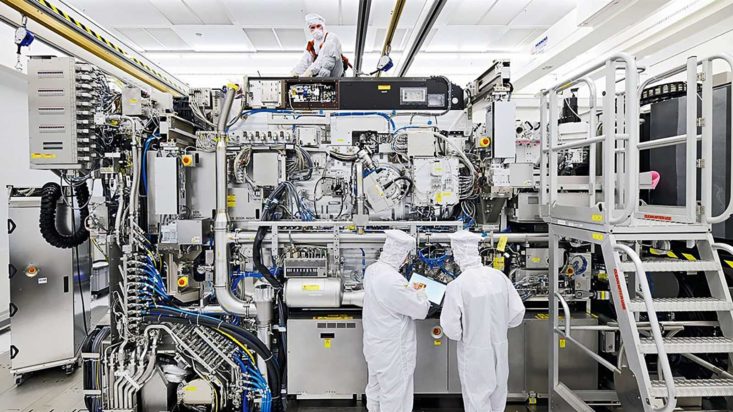Harnessing the duration effect to look beyond short-term noise
Semiconductor equipment manufacturer ASML, paint and coating company Sherwin-Williams, and payments company Mastercard are examples of stocks which possess the ‘duration effect’, or the ability to compound their free cash flows over time, according to Eileen Riley, CFA, Co-Portfolio Manager of the Loomis Sayles Global Equity Fund. The following are key take-outs from my recent interview with Eileen about the duration effect and its role in the global equities portfolio she co-manages with Lee Rosenbaum.
You can view the full interview here
The value of compounding free cash flow
The duration effect is a company’s ability to add value over time through the compounding of its free cash flow. Eileen and her colleagues select high-quality companies with competitive advantages which they believe can be sustained over multiple years, which enables these companies to compound their free cash flow.
“We’re seeking to capture the two market inefficiencies of the duration effect and mispricing through our three alpha drivers of quality, intrinsic value growth, and valuation, to help create multiple sources of alpha generation,” Eileen says.
A key element of the approach behind the Loomis Sayles Global Equity Fund is the selection of companies able to generate growth potential in their own right, rather than relying on the state of the market or economic cycle, Eileen says.
Because the global macroeconomic and geopolitical outlook is always in flux, this presents a challenge for investors with a more short-term orientation. The team looks past the volatility, and invests in companies they believe are building value over time.
“If we look at our current situation, for example, the economic recovery in large part depends on the successful rollout of vaccines on a global scale, and the scope of continued fiscal and monetary support and other relief packages.
“These are quite challenging for anyone to forecast, and we feel the best way we can add value to our clients is to maintain our focus on investing in high-quality companies that we believe have the ability to successfully navigate the current environment and generate value over the longer term,” she says.
Where are the duration effect opportunities?
Companies which possess this duration effect can be found in many sectors and industries, Eileen says. She nominates as examples companies in the technology sector, ranging from electronic payments to semiconductor manufacturing and equipment, as well as consumer companies capturing demand for e-commerce and at-home connected fitness.
“Another area is healthcare companies offering services and products geared to higher growth areas of the market, which often also offer greater visibility and manageable reimbursement risk.”
Commodities, oil and gas exploration, and metals and mining generally offer fewer opportunities to identify companies possessing the duration effect, Eileen says: “Typically what we see here are companies that have a high, and more importantly, unpredictable level of capital intensity. Many times these businesses are also price-takers, and all of that reduces our confidence in their ability to grow their free cash flow over time.”
Semiconductor equipment company ASML is an example of a company in the portfolio which possesses this duration effect. The firm is a leader in photolithography, the process in which a light source is used to etch a pattern on to a silicon wafer.
“ASML is distinctly positioned within extreme ultraviolet lithography (EUV), which is the next generation technology needed for chipmakers to continue to make smaller chips while maintaining their power,” she says.
“The required technical expertise for this industry, coupled with the shift to a more value-based service model, gives us a high degree of confidence in ASML’s ability to grow its cash flows over multiple years. Additionally, the company has a solid balance sheet, which we believe will help it withstand economic cycles.”
Paint and coatings company Sherwin-Williams is another example of a company in the portfolio which possesses the duration effect.
“Sherwin-Williams rates highly across our quality criteria, with a strong management team and leading brands,” Eileen says.
“The business has strong pricing power, as its core architectural business is geared more towards the higher growth professional painter than it is to the do-it-yourself painter. Professionals are typically less sensitive to price increases on materials, because materials are a small percentage of what they charge their end customers, and using a premium product can also save their end customers money on labour costs.”
Analysing the duration effect
Barriers to a company’s ability to compound its free cash flow tend to be company-specific.
These include companies where businesses are price-takers, or where their own business model presents challenges – for example, a company could lack recurring revenue. To address this, the team continually reassess a company’s quality attributes, and creates a downside scenario for each stock they value, to model the potential headwinds to free cash flow growth.
Eileen gives as an example analysis she and her colleagues have undertaken on Mastercard.
“Most people are aware that it’s in an effective duopoly in the global payments processing space, outside of China. The potential impediments to its free cash flow generation could include the risk of displacement by new technology, or growth stalling within its ancillary businesses such as its business-to-business payments and data analytics segments. So we modelled both of these dynamics into our downside scenario.”
Ultimately, Eileen says, focusing on this duration effect enables the team behind the Loomis Sayles Global Equity Fund to look past short-term market noise to focus on the long-term value creation potential of a company for investors. “We feel our favourable track record is a testament to this.”
Peter McPhee is Investment Specialist for the Loomis Sayles Global Equity Fund.
Examples above are provided to illustrate the investment process for the strategy used by Loomis Sayles and should not be considered recommendations for action by investors. They may not be representative of the strategy’s current or future investments and they have not been selected based on performance. Loomis Sayles makes no representation that they have had a positive or negative return during the holding period.
The information in this article is provided for general information purposes only and does not take into account the investment objectives, financial situation or needs of any person. Investors Mutual Limited (AFSL 229988) is the issuer and Responsible Entity of the Loomis Sayles Global Equity Fund (‘Fund’). Loomis Sayles & Company, L.P. is the Investment Manager. This information should not be relied upon in determining whether to invest in the Fund and is not a recommendation to buy, sell or hold any financial product, security or other instrument. In deciding whether to acquire or continue to hold an investment in the Fund, an investor should consider the Fund’s Product Disclosure Statement, available on the website www.loomissayles.com.au or by contacting us on 1300 157 862. Past performance is not a reliable indicator of future performance. Investment in the Fund are not a deposit with, or other liability of, Investors Mutual Limited and are subject to investment risk, including possible delays in repayment and loss of income and principal invested. Investors Mutual Limited does not guarantee the performance of the Fund or any particular rate of return.
MALR027438










